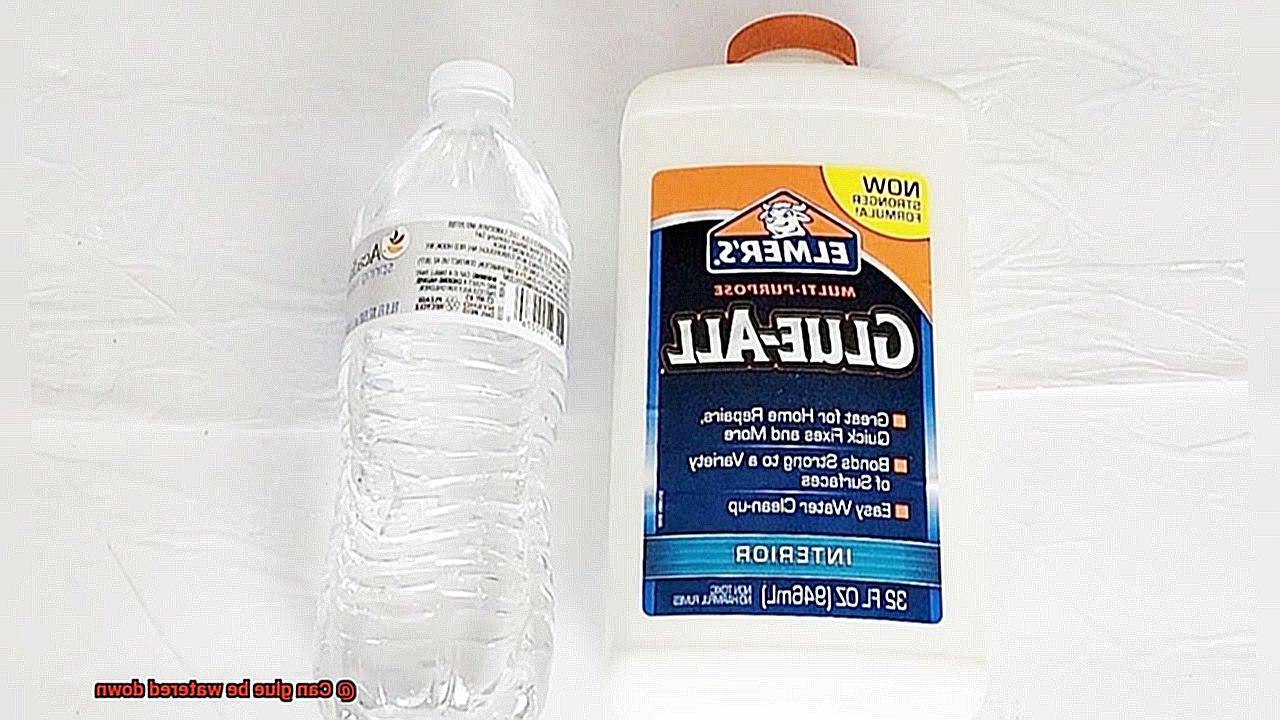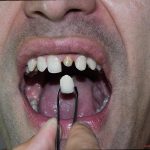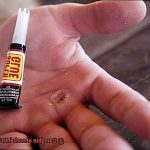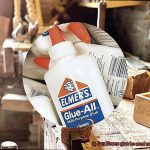Are you tired of struggling with thick, unusable glue? Or maybe you’re a DIY enthusiast who needs the perfect consistency for your latest project. Whatever the case may be, the question on everyone’s mind is: Can glue be watered down?
Well, the good news is that it can. However, the process varies depending on the type of glue you’re using. Fear not though. In this blog post, we’ll explore all the different types of glues that can be thinned out with water and guide you through the proper steps to take.
But why would anyone want to water down their glue? For starters, it’s a great way to save money and extend its lifespan. Plus, it makes for easier application and creates a smoother finish. Unfortunately, there are some common misconceptions about thinning out glue – like that it weakens its bonding capabilities – but we’ll address those too.
So whether you’re a seasoned crafter or just starting out in the world of DIY projects, this blog post is for you. Sit back, relax with a cup of coffee (or tea.), and let’s dive into everything you need to know about watering down glue.
What Types of Glue Can Be Thinned Down With Water?
Contents
There are some types of glue that can be thinned down with water, making them more versatile and easier to work with.
One of the most popular types of glue that can be thinned down with water is PVA (polyvinyl acetate) glue. This type of glue is a staple in woodworking, paper crafts, and many other DIY projects. Thanks to its water-soluble nature, PVA glue can be easily diluted with water to achieve the desired consistency. Plus, it dries clear and can be cleaned up with ease.
Another type of glue that responds to water is white school glue, also known as Elmer’s glue. This commonly used adhesive is perfect for children’s crafts and classroom activities. Like PVA glue, it is also water-soluble and can be thinned down by adding water.
However, it’s important to note that not all glues can be thinned down using water. For example, cyanoacrylate or superglue reacts with moisture to form a powerful bond that cannot be diluted once applied. Additionally, epoxy and contact cement are not water-soluble and cannot be thinned down using this method.
It’s always a good idea to read the label or manufacturer’s instructions before attempting to thin down any type of glue with water. If you’re using PVA or Elmer’s glue, remember that adding too much water can weaken the bonding strength of the adhesive. To avoid this, add small amounts of water at a time and mix thoroughly until you reach your desired consistency.
What Types of Glue Cannot Be Thinned Down With Water?
In fact, some glues cannot be thinned down at all.
For example, superglue or cyanoacrylate glue is a powerful adhesive that sets quickly and forms a strong bond. However, it dries so fast that adding water or any other solvent won’t thin it out. Similarly, epoxy glue is a two-part adhesive that consists of a resin and hardener. Once mixed, the adhesive sets quickly to form a high-strength bond. Adding water to the mixture can alter the chemical reaction and weaken the bond.
Polyurethane glue or Gorilla Glue is another type of adhesive that cannot be thinned down with water. This glue expands as it dries to form a waterproof bond, but adding water to the mixture will interfere with the expansion process and weaken the bond.
It’s important to carefully read the label and instructions before attempting to thin down any type of glue. Some types of glue may require specific solvents or thinners for thinning down, while others may not be suitable for thinning down at all.
Benefits of Thinning Glue with Water
I have a solution that will make your life easier – thinning your glue with water. As an expert on glue, I can tell you that this technique can offer several benefits that will help you achieve a stronger bond and a more professional-looking finish.
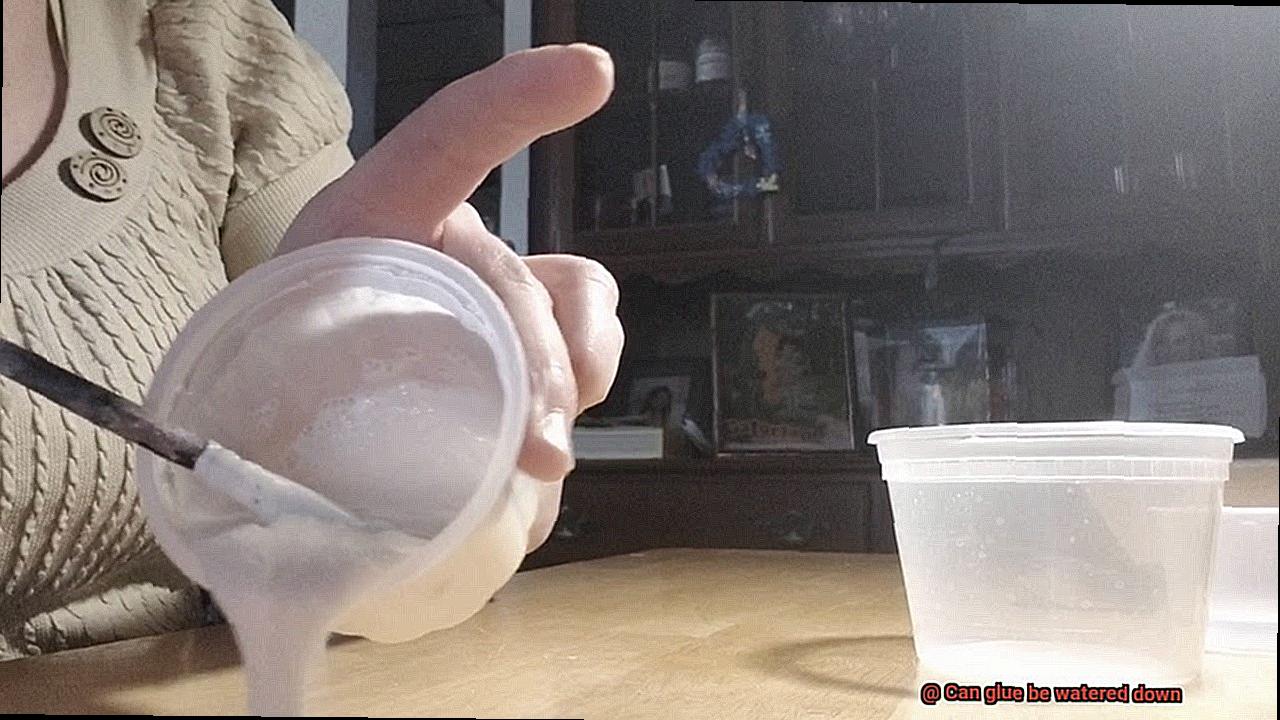
One of the primary benefits of thinning glue with water is that it enables a more even application. When glue is too thick, it can be challenging to spread it evenly over the surface, leading to gaps in the adhesive and a weaker bond. However, by thinning the glue with water, it becomes easier to work with and can be spread more evenly, resulting in a stronger bond.
Another advantage of thinning glue with water is that it reduces the risk of air bubbles. Trapped air bubbles between the surfaces being bonded can weaken the bond over time. But when you thin the glue with water, air bubbles can escape more easily, resulting in a stronger and more reliable bond.
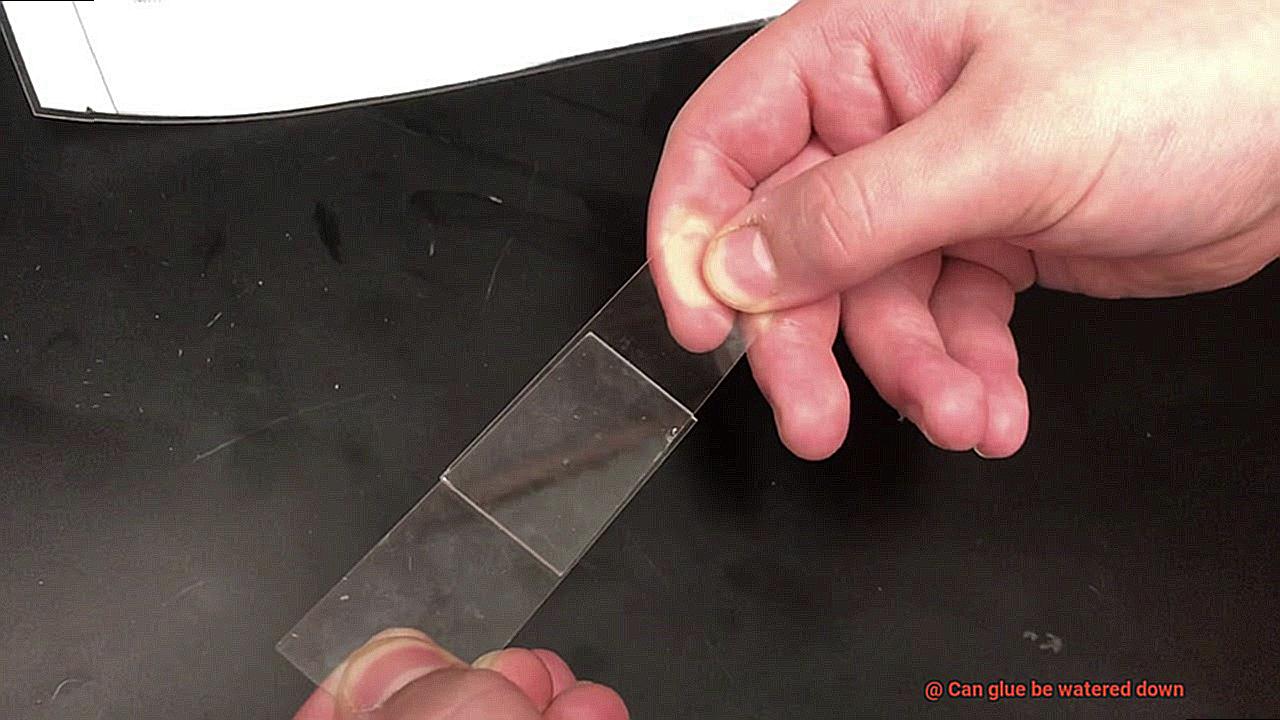
Moreover, thinning glue with water can prevent clumping. When glue is applied too thickly, it can dry unevenly and form unsightly clumps or bumps. This not only looks unprofessional but also compromises the strength of the bond. However, by thinning the glue with water, it becomes easier to apply in a smooth and even layer, resulting in a more professional-looking finish.
If you’re new to thinning glue with water, it’s important to experiment with different ratios to find the right consistency for your specific application. Start by adding small amounts of water until you achieve the desired consistency. Always read the label and instructions carefully before attempting to thin down any type of glue.
Risks of Thinned Glue
It is important to be aware of the potential hazards before proceeding.
One of the biggest risks of thinning glue is that it may compromise its adhesive properties, leading to weaker bonds that can fail over time. This can cause structural damage or even personal injury. Furthermore, thinned glue may have a shorter shelf life, making it unsuitable for future projects.
Uneven application is another concern when using thinned glue. It can be challenging to ensure consistent coverage, resulting in a less-than-optimal final product. This is especially problematic in projects where precision and consistency are essential.
Adding water to glue can also pose safety risks as it can create a breeding ground for mold if not used immediately. Mold exposure can cause respiratory issues or allergic reactions, especially in people with pre-existing health conditions.
In addition, thinned glue may be more inclined to drip or run during application. This increases the risk of accidental spills and potentially harmful exposure to skin or eyes.
How to Thin Down Glue with Water
Glue is a versatile adhesive that can be used for a variety of purposes, including crafting, woodworking, and DIY projects. However, sometimes the consistency of the glue may not be ideal for your project. That’s where thinning down glue with water comes in handy. But before you start thinning down any type of glue with water, it’s important to understand the types of glue and how they can be thinned down.
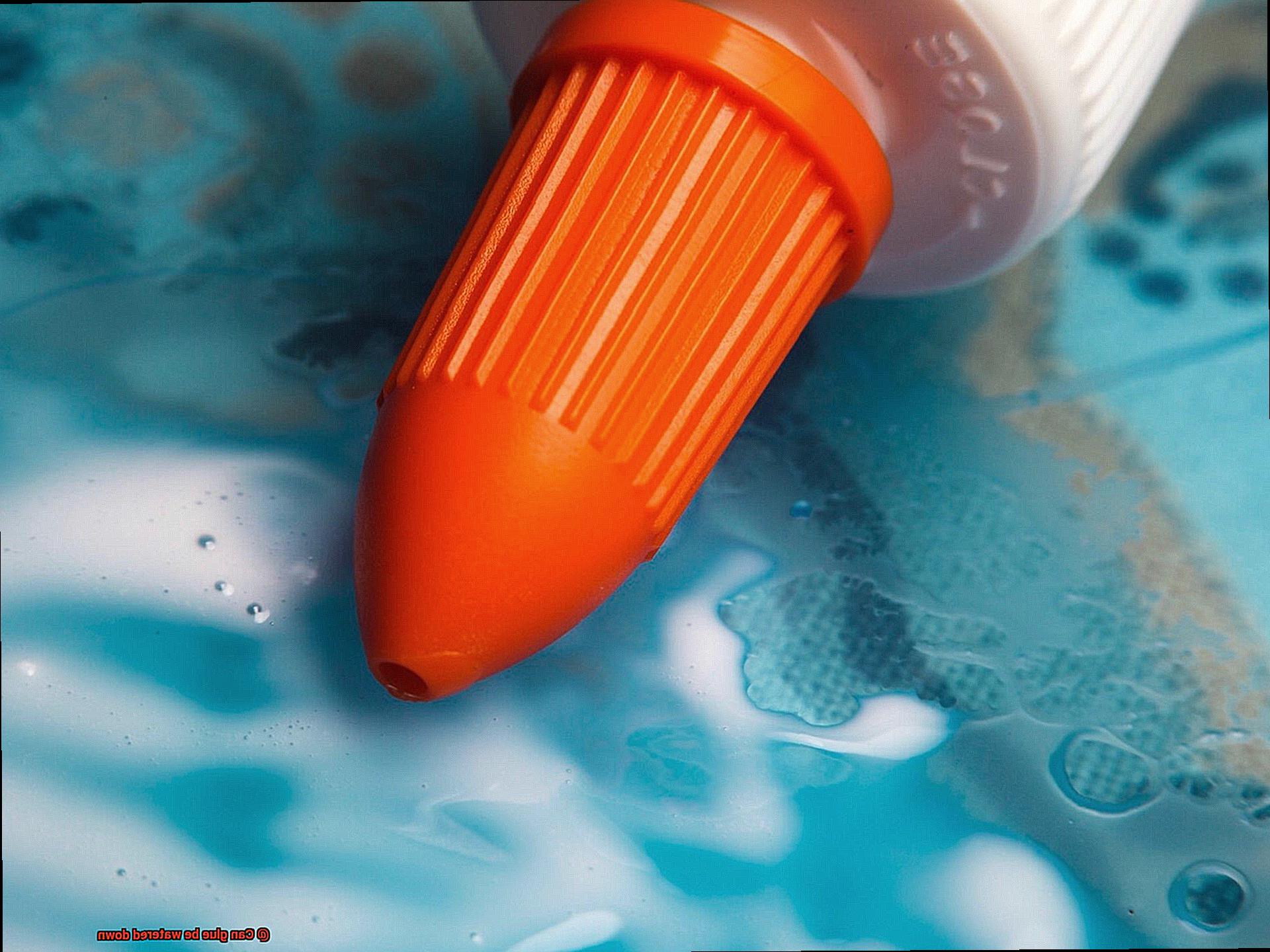
Understanding the Types of Glue
Not all types of glue can be thinned down with water. Some glues are already formulated to be thin and do not require any additional thinning. Additionally, some types of glue may not be water-soluble and therefore cannot be thinned down with water. It’s important to read the label and instructions on the glue bottle or package to determine if the type of glue you are working with is compatible with water.
Thinning Down PVA Glue with Water
PVA glue or white glue is one of the most common types of glue used for crafting and woodworking. To thin down PVA glue with water, mix equal parts of water and glue in a container and stir the mixture until it reaches the desired consistency. It’s important to add water slowly and gradually to avoid over-thinning the glue. Keep adding water until the desired consistency is achieved, but be careful not to compromise the bond strength by adding too much water.
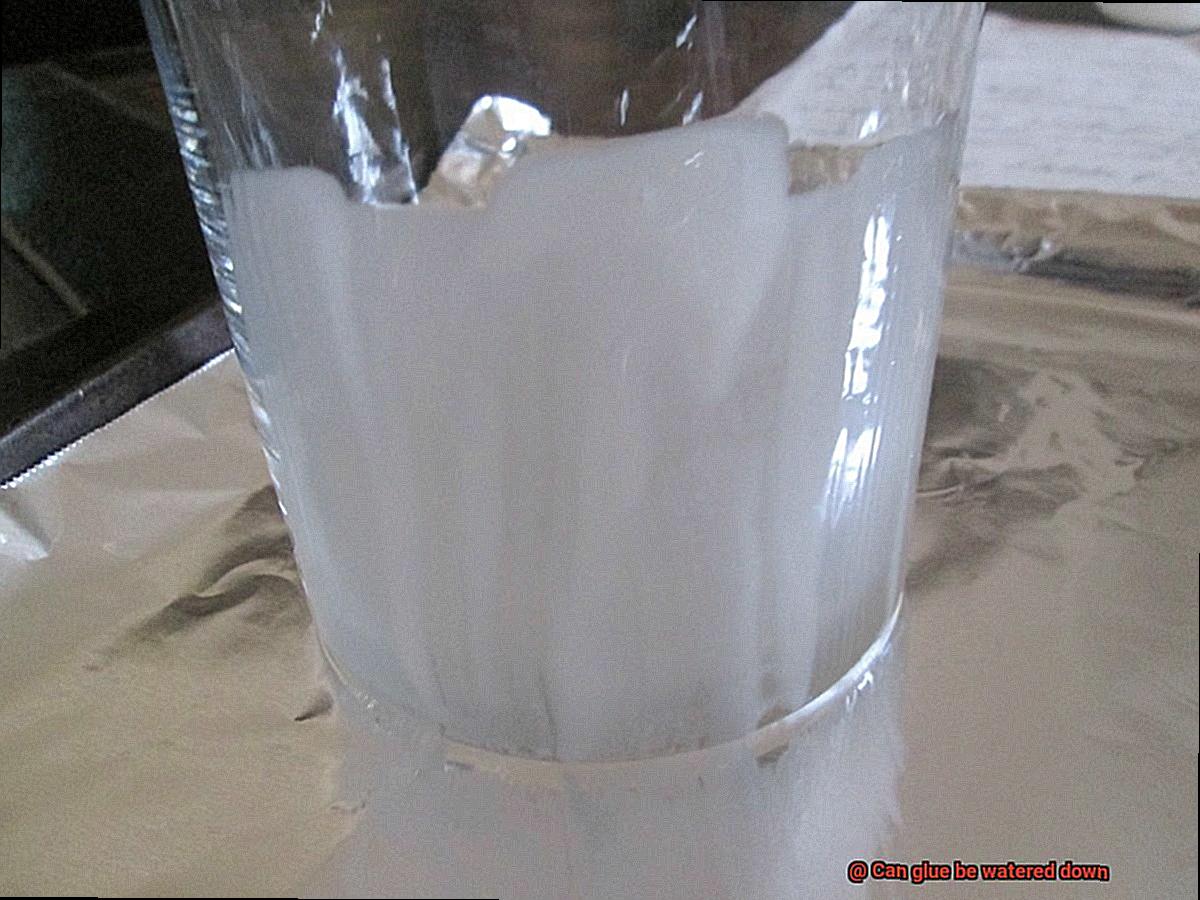
Using Other Substances to Thin Down Glue
In addition to using water, there are other substances that can be used to thin down glue depending on the type of glue being used. For example, rubbing alcohol can be used to thin down super glue, while acetone can be used to thin down epoxy. However, it’s important to read the label and instructions on the glue bottle or package before using any other substance to thin down glue.
Avoiding Compromising the Bond Strength
Thinning down glue with water may affect its bonding strength. The more water that is added, the weaker the bond may become. Therefore, it’s recommended to only add enough water to achieve the desired consistency without compromising the bond strength. In addition, commercial products are available that are designed specifically for thinning down glue without affecting its bonding strength. These products can be a good alternative for those who are concerned about compromising the strength of their bond when using water.
Following Instructions Carefully
When it comes to thinning down glue with water or any other substance, it’s important to follow instructions carefully. Adding too much water or using the wrong substance can compromise the strength of the bond. Therefore, read the label and instructions on the glue bottle or package before attempting to thin it down. By following instructions carefully, you can achieve the desired consistency without compromising the strength of your bond.
Tips for Thinning Glue with Water
Crafting with glue can be a hassle, especially when the glue is too thick to work with effectively. Fortunately, there are several tips and tricks for thinning glue with water that can make your crafting experience much smoother. Here are five subtopics to help you achieve the perfect consistency.
Determine if your glue can be thinned with water
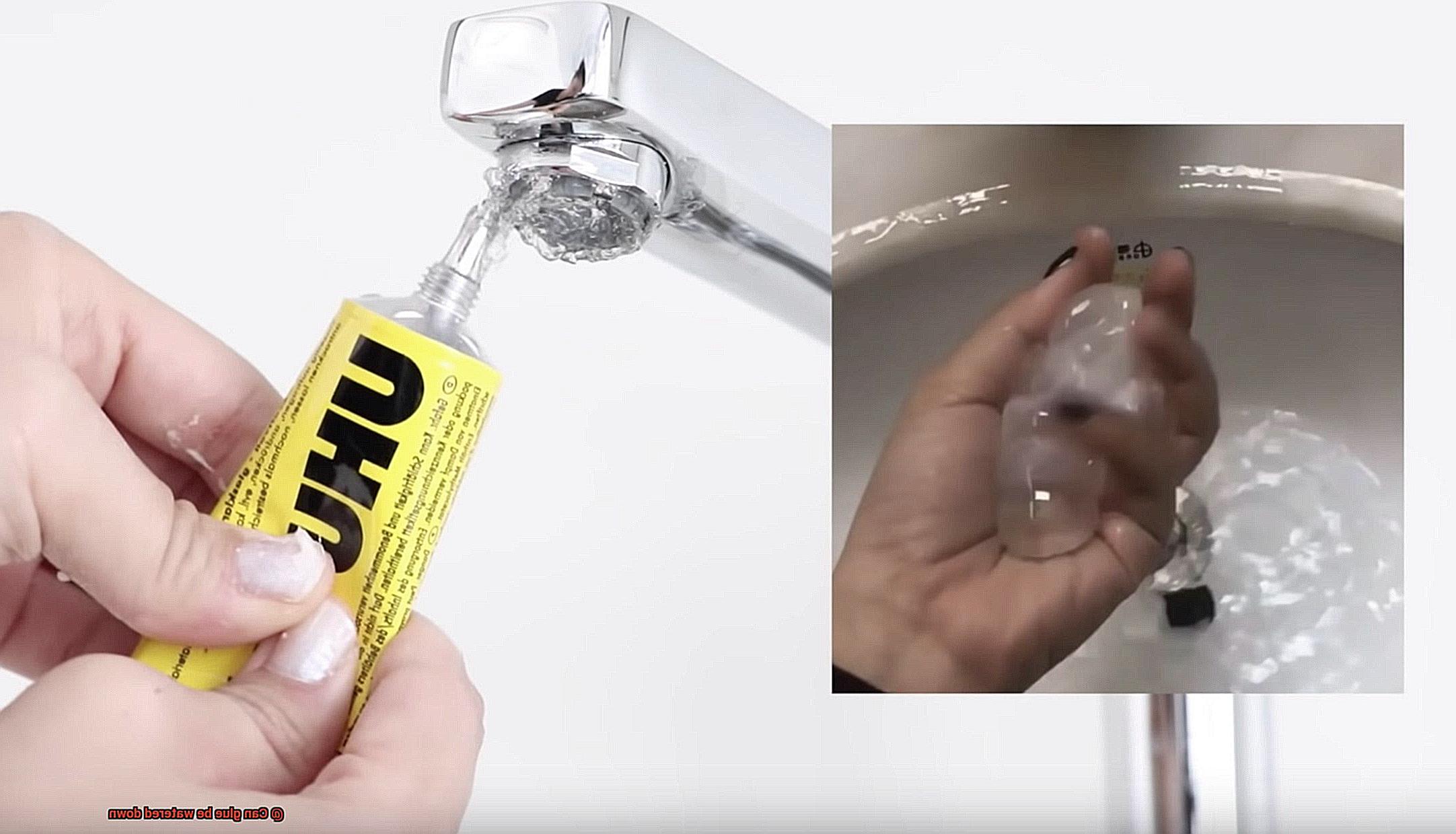
Before you start thinning your glue, it’s crucial to read the label or manufacturer’s instructions to determine if your glue can be thinned with water. Some types of glue, like superglue or cyanoacrylate adhesive, cannot be thinned down with water as they are not soluble in water. So, always check the label before you start.
Add small amounts of water at a time
Assuming that your glue can be thinned with water, start by adding small amounts of water at a time. This will allow you to control the consistency of the glue and prevent it from becoming too thin. Mix thoroughly before adding more water. By adding small amounts of water gradually, you can achieve the perfect consistency without ruining the bond strength.
Use warm distilled water
Warm distilled water will help the glue dissolve more easily and create a smoother consistency than cold water. It’s also essential to use distilled water instead of tap water, as tap water may contain impurities that could affect the quality of the glue. Using warm distilled water will ensure that your glue mixes well and has a smooth texture.
Test on a scrap piece of material
Before using the thinned glue on your actual project, test it on a scrap piece of material to ensure that the consistency is correct and that the thinned glue still has proper bonding strength. By testing on a separate surface, you can avoid any mishaps and ensure that your finished product turns out just right.
Consider using a specialized thinner or solvent
If you’re working on a project where strength is crucial, like woodworking or metalworking, it may be better to use a specialized thinner or solvent designed for use with that particular type of glue. Using a specialized thinner or solvent can maintain the bonding strength of the glue while still achieving the desired consistency.
1VTADdLgquU” >
Also Read: Is Elmer’s Glue Waterproof?
Conclusion
In conclusion, the answer to the age-old question of whether glue can be watered down is a resounding yes. However, it’s important to note that not all types of glue can be thinned down with water. PVA glue and white school glue are two examples of adhesives that can be diluted with water, but cyanoacrylate or superglue and epoxy cannot.
Thinning glue with water has several benefits, including smoother application, a more polished finish, and a stronger bond. But caution must be taken when diluting glue as adding too much water or using the wrong substance can compromise its adhesive properties.
If you’re new to thinning glue with water, start by gradually adding small amounts of warm distilled water until you achieve your desired consistency. To ensure proper bonding strength, test on a scrap piece of material before applying it to your actual project. If strength is crucial for your project, consider using specialized thinner or solvent.
In summary, thinning down glue with water is an excellent way to save money and make crafting more efficient. With proper technique and care, you can achieve professional-looking results in your DIY projects without breaking the bank.

